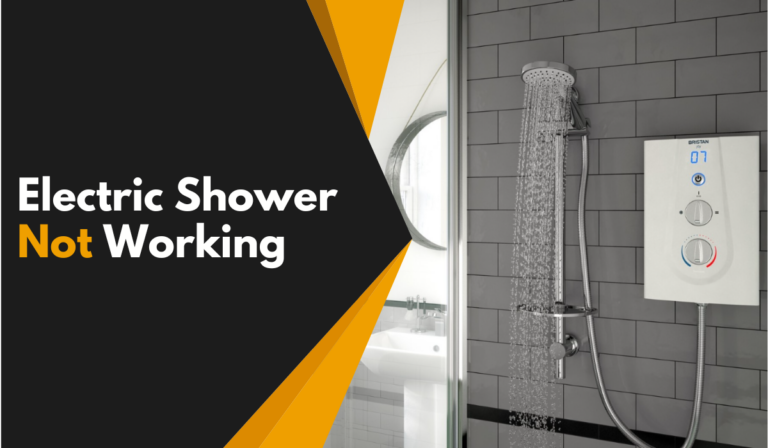What Is a Transfer Shower
A transfer shower is designed to make bathing safer and easier if you have mobility challenges. You’ll find a low or no-threshold entry for smooth wheelchair access, built-in seating, grab bars for stability, and reachable controls. These features help you maintain independence, reduce fall risks, and save space compared to traditional showers. If you want to understand how transfer showers might suit your needs and installation tips, keep exploring to get all the details.
Features of a Transfer Shower
What makes a transfer shower stand out is its thoughtful design tailored for accessibility and safety. You’ll notice a low or no-threshold entry, making it easy to roll in with a wheelchair or take a step without tripping.
The shower includes a built-in bench or seat, so you can sit comfortably while washing. Grab bars are strategically placed to provide stability as you move in and out.
The controls and showerhead are installed within reach, allowing you to adjust water temperature and flow without straining. Non-slip flooring ensures you won’t lose your footing, even when things get wet.
These features work together to create a safer, more convenient showering experience that respects your independence and dignity.
Benefits of Using a Transfer Shower
Because transfer showers are designed with accessibility and safety in mind, they can significantly enhance your daily routine by making showering easier and more comfortable. You’ll find it simpler to get in and out without struggling or risking falls, thanks to grab bars and built-in seating. These features reduce the effort and anxiety often associated with showering, helping you maintain independence longer.
Transfer showers also save space, making them ideal for smaller bathrooms or homes where maximizing room matters. Plus, their thoughtful design can lower the risk of injuries, offering peace of mind for both you and your loved ones.
Who Can Benefit From a Transfer Shower
Who stands to gain the most from a transfer shower? If you or a loved one faces mobility challenges, a transfer shower can make daily routines easier and safer.
People who use wheelchairs or walkers often find these showers more accessible because they allow you to move directly onto a shower seat without stepping over a tub edge. Seniors with limited balance can also benefit, reducing the risk of slips and falls.
Caregivers appreciate how transfer showers simplify assistance during bathing, providing more comfort and dignity. Even if you’re recovering from surgery or injury, a transfer shower offers convenience and support.
Ultimately, anyone needing a safer, more manageable bathing option will find a transfer shower a practical solution tailored to their needs.
Installation Considerations for Transfer Showers
When planning to install a transfer shower, you’ll need to consider several key factors to ensure it meets your specific needs. First, check the available space—transfer showers typically require enough room for a wheelchair or mobility aid to maneuver comfortably.
You’ll want to verify that the doorway width and shower entry accommodate easy access. Next, think about the shower’s height and grab bar placement to provide safety and support. Proper drainage and slip-resistant flooring are essential to prevent accidents.
Also, consider the installation of a fold-down seat if standing is difficult. Finally, consult with a professional installer experienced with accessible bathrooms to ensure plumbing and electrical work meet local codes.
Careful planning guarantees a functional, safe, and comfortable transfer shower.
Comparing Transfer Showers to Traditional Showers
Although both transfer showers and traditional showers serve the same basic purpose, they differ significantly in design and functionality.
Transfer showers are tailored for accessibility, allowing you to move safely from a wheelchair into the shower without stepping over a threshold. They usually feature grab bars, a bench or seat, and a wider entrance.
Traditional showers, on the other hand, often have a raised curb and less space, which can make entry challenging if you have mobility issues.
If you prioritize independence and safety, a transfer shower is the better choice. However, traditional showers might suit you if you don’t have special mobility needs and prefer a standard design.
Understanding these differences helps you pick a shower that best fits your lifestyle and physical requirements.
Frequently Asked Questions
How Much Does a Transfer Shower Typically Cost?
You’ll typically spend between $800 and $3,000 for a transfer shower, depending on features and installation complexity. Higher-end models with accessibility upgrades can cost more, so it’s smart to compare prices before buying.
Are There Specific Brands Known for Transfer Showers?
Yes, you’ll find brands like Drive Medical, Moen, and Medline known for reliable transfer showers. They focus on safety, durability, and accessibility, making it easier for you to choose a quality option tailored to your needs.
Can Transfer Showers Be Customized for Small Bathrooms?
Yes, you can customize transfer showers for small bathrooms. You’ll find adjustable seats, foldable benches, and compact grab bars that fit tight spaces, making your shower both accessible and space-efficient without sacrificing comfort or safety.
What Maintenance Is Required for a Transfer Shower?
You’ll need to regularly clean the shower surfaces, check and tighten any grab bars or seats, inspect the drain for clogs, and ensure the handheld showerhead functions properly. This keeps your transfer shower safe and efficient.
Do Transfer Showers Require Special Plumbing Adjustments?
Yes, you’ll likely need special plumbing adjustments for a transfer shower to ensure proper water flow and drainage. It’s important to consult a professional plumber to handle any necessary modifications safely and efficiently.
Conclusion
A transfer shower offers you a safer, more accessible way to shower, especially if you have limited mobility. Its design makes getting in and out easier, reducing the risk of slips or falls. Whether you’re recovering from an injury or simply want added convenience, a transfer shower can make a big difference. Keep installation needs in mind, but overall, it’s a smart alternative to traditional showers that puts your comfort and safety first.

